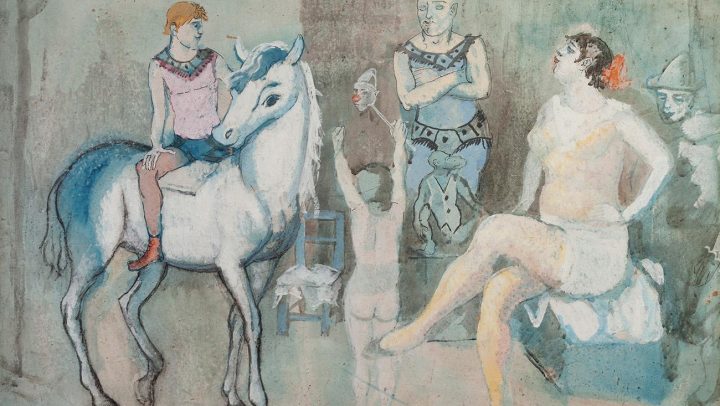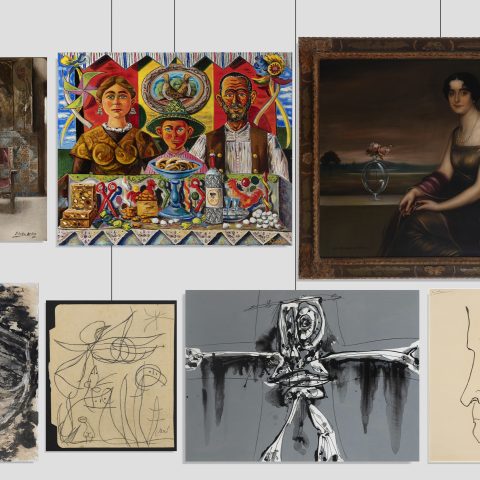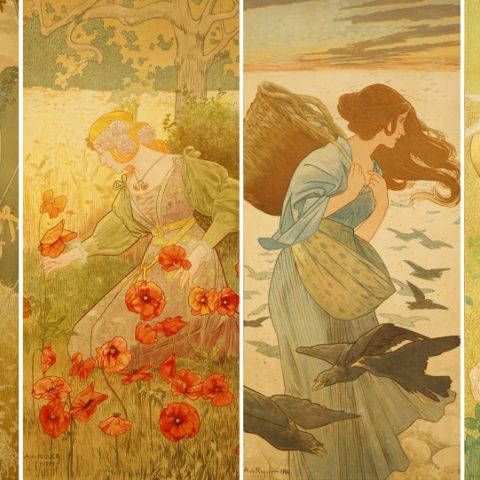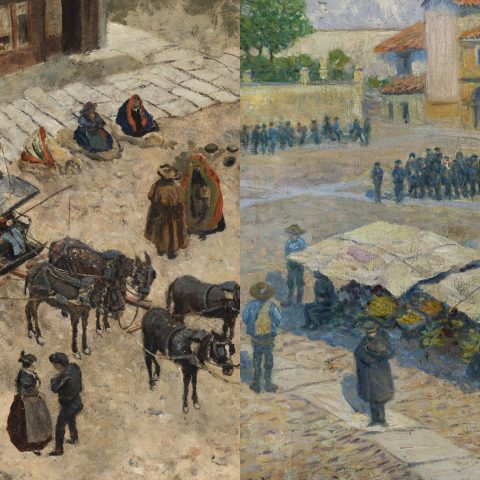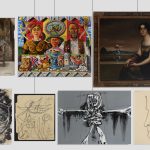The tragicomic sense with which Celso Lagar represented the circus world reveals one of the most applauded aspects of his career.
The relevance acquired by the circus world between the end of the 19th century and the beginning of the 20th century was reflected in art through a wide range of artists. who, attracted by the bohemian and eccentric spirit of the circus, wanted to capture the essence of this wonderful and cathartic visual spectacle. At that time, and especially in Paris, the circus had become one of the great epicenters of social life, becoming, without a doubt, an inexhaustible source of inspiration and experimentation in the development of the artistic avant-garde.
In fin-de-siècle Paris, artists such as Tolousse-Lautrec, Chagall, Picasso or Leger, discovered the possibilities that this great spectacle offered them, opening the doors to a dream world, where fantasy, magic and the longing to recover the lost paradise of their childhood, meant refuge and hope in the face of daily misfortunes. In this way, the circus, which from its irreverence and optimism aroused the most primal and genuine emotions, was discovered as the perfect setting in which to unleash the new spirit of modernity and freedom championed by the artistic avant-gardes. This space, free of social conventions, was also the place where vibrant colors, fast-paced movement and compositional freedom found a place to come alive.
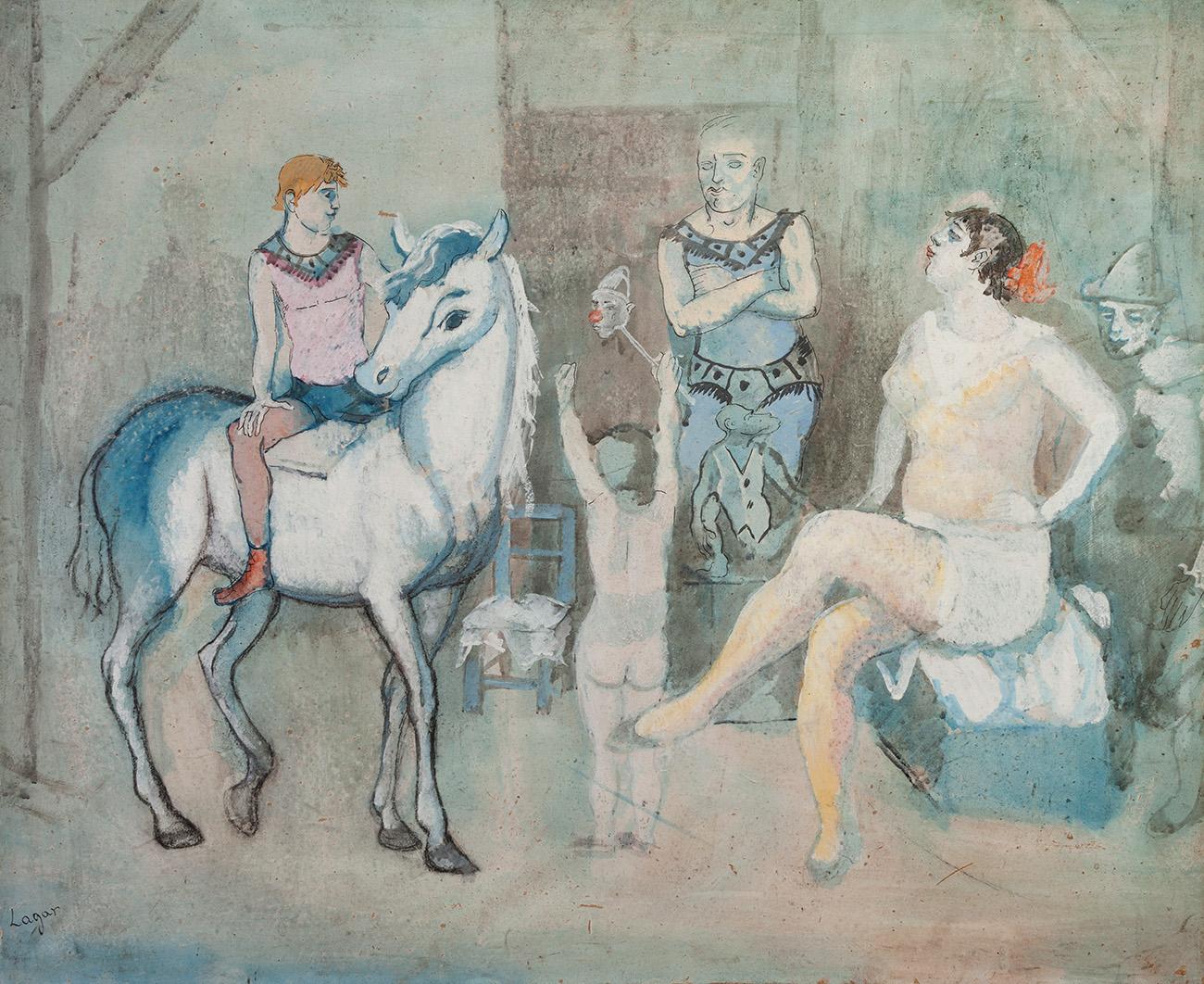
However, in contrast to this idealized image of the circus world, there were many artists who reflected the cruder and more sordid face that was hidden behind it. The circus became a metaphor for the human condition where tragedy and comedy became two sides of the same coin. From then on, the feeling of melancholy and nostalgia was identified with the marginal condition of those fascinating characters who, after the stage lights went out, lived a reality far removed from the splendor of the show. From this point of view, Picasso’s depictions are probably the most prescient example of the tragic meaning that enveloped the circus stars, whose picturesque, marginal and transgressive life was identified with that of the artist himself. In this sense, the figure of the clown embodies, like no other, the artist’s feeling of incomprehension and loneliness. But beyond Picasso, there were many Spanish artists such as Benjamín Palencia, Antoni Clavé, Maruja Mayo or Celso Lagar who made the circus theme one of the centers of their production.
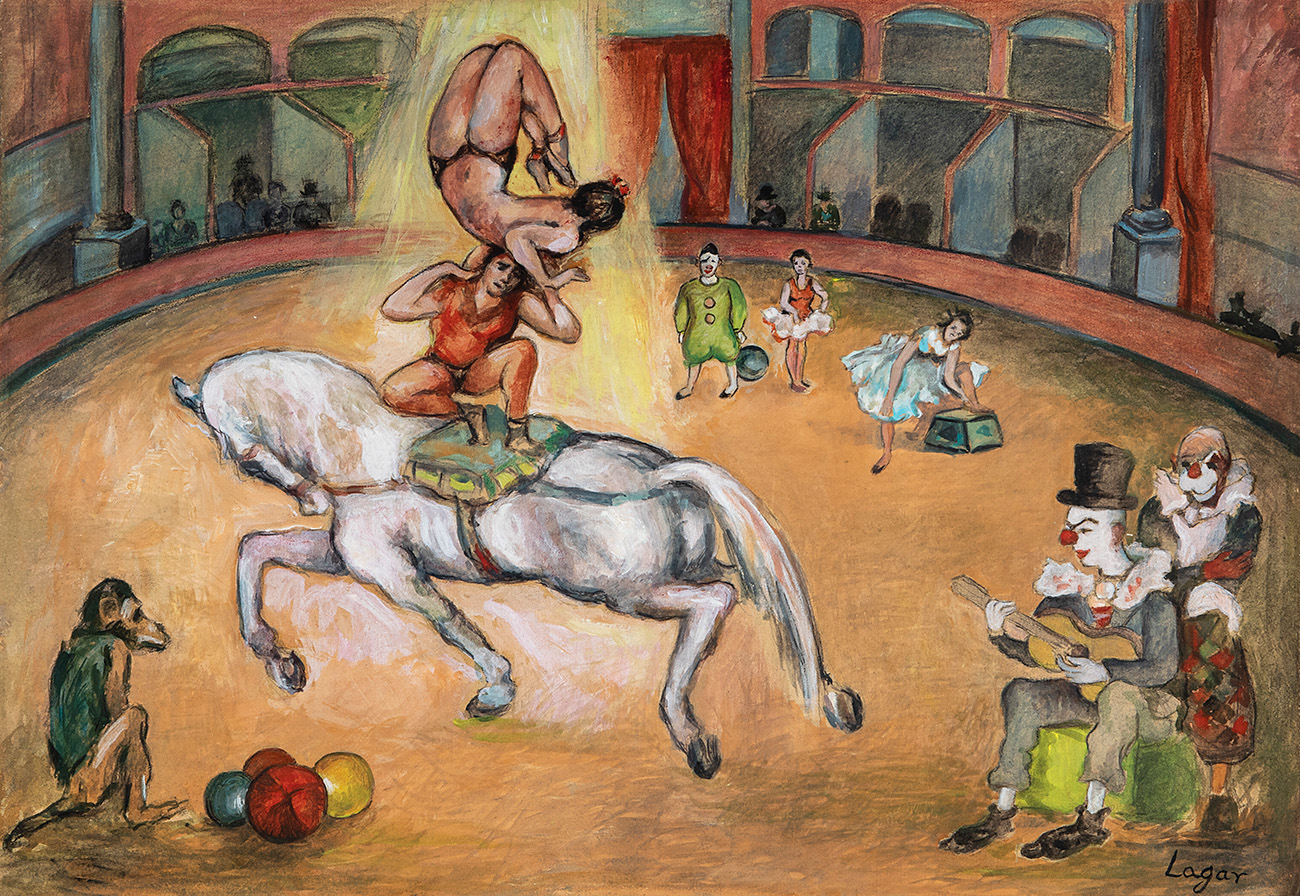
In this sense, Celso Lagar embodies the figure of the cursed artist that accompanied many of the great artists of the first half of the last century and that even today is part of the image we have built around the myth of the genius. Immersed in the bohemian life of the city of Paris, where he would spend most of his life, Lagar found the breeding ground from which his plastic character would be born. In fact, the tragic character that dominated his existence finds in the circus theme the ideal scenario through which to build a metaphor of the human condition.
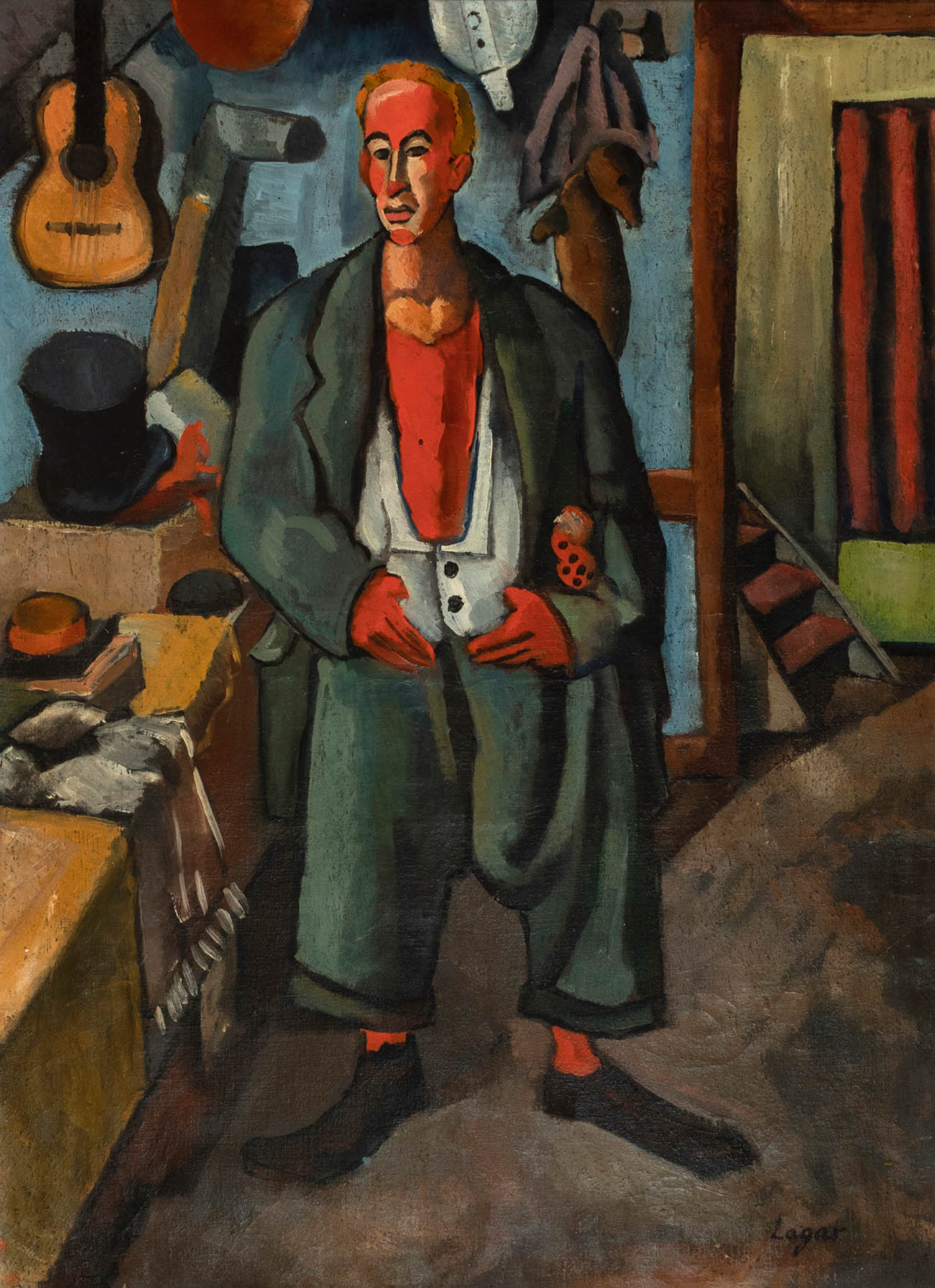
The importance that this theme acquired within the artist’s imaginary led him to be known as the painter of the circus thanks to works that, like the one we present today, constitute one of Lagar’s most celebrated and applauded creative stages. In it emerges a halo of melancholy and sadness that clearly reminds us of the most classicist Picasso both in its subject matter and in its plastic conception. The serious faces and the languor of his protagonists, together with the predominance of cold tones, give us an image where the deep feeling of loneliness and rootlessness that accompanied him since he left his native Andalusia, becomes a symbol of the society between the wars.
In short, the circus show was transformed by Celso Lagar into a reflection of the spectacle of life.

